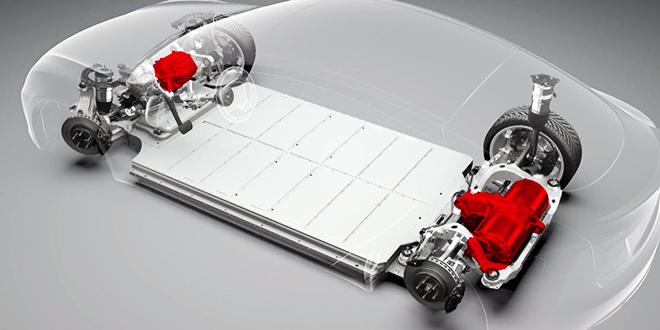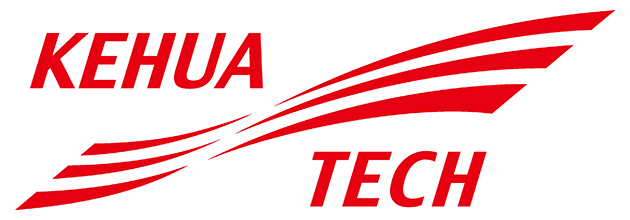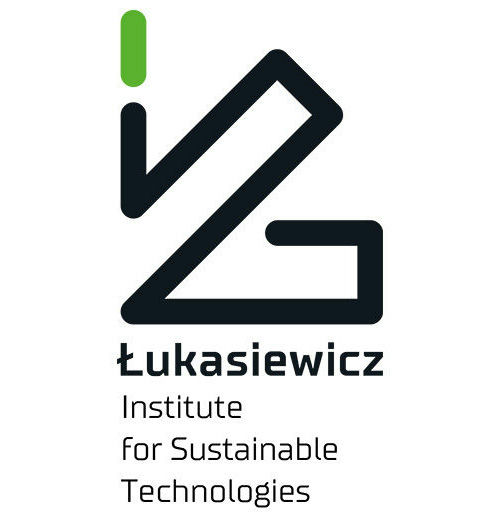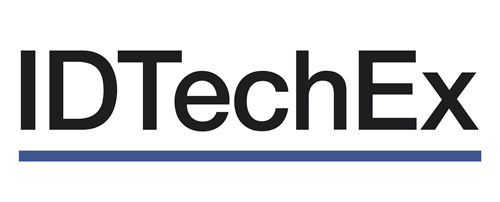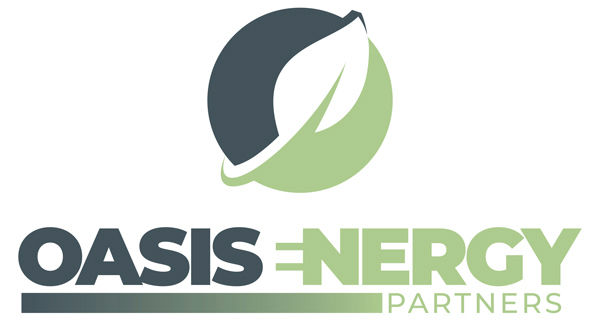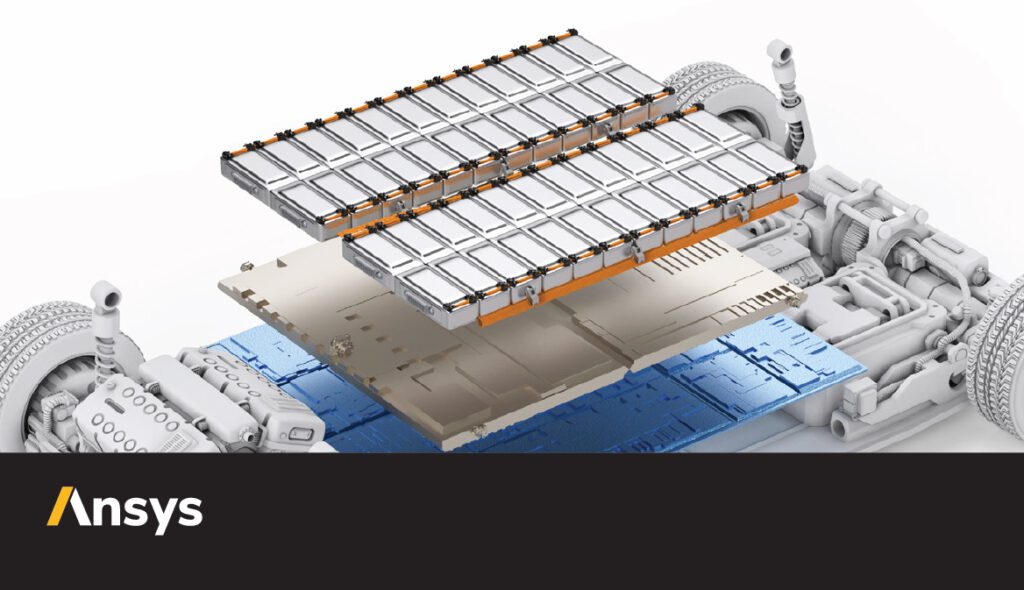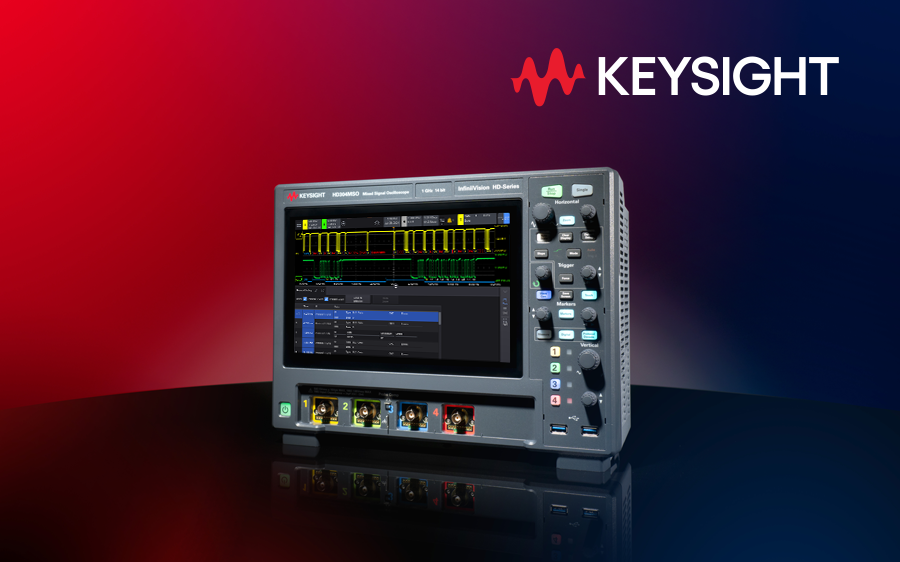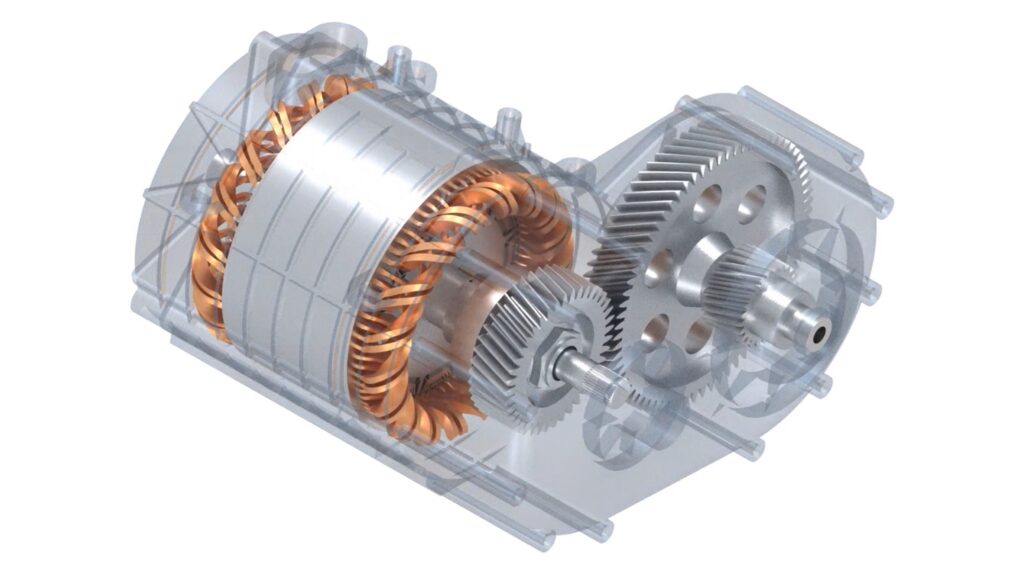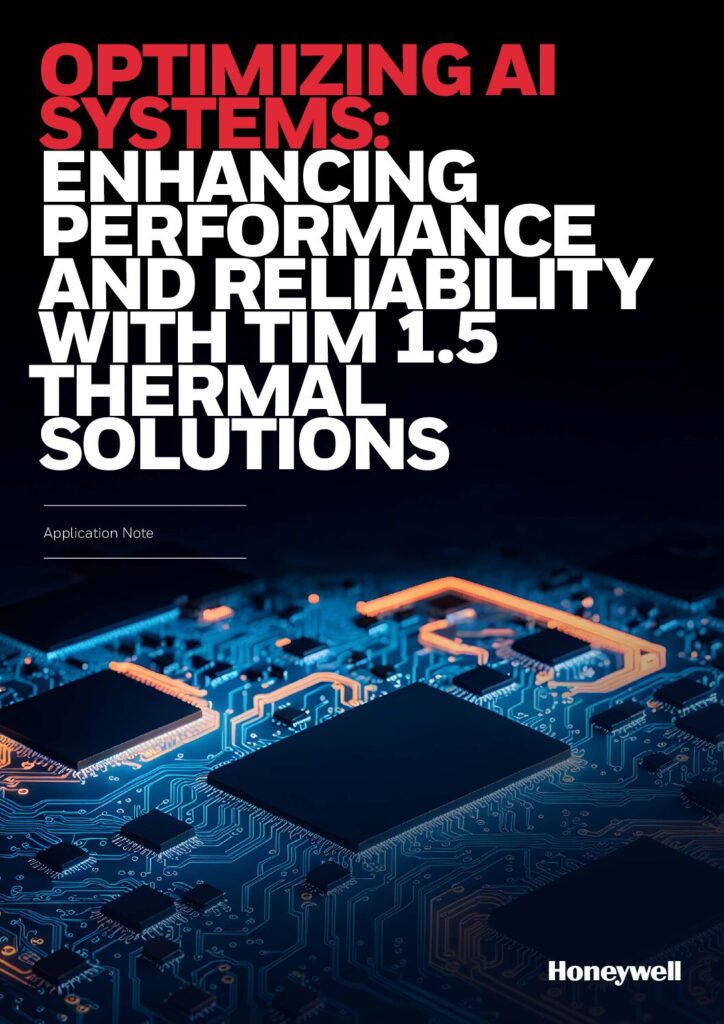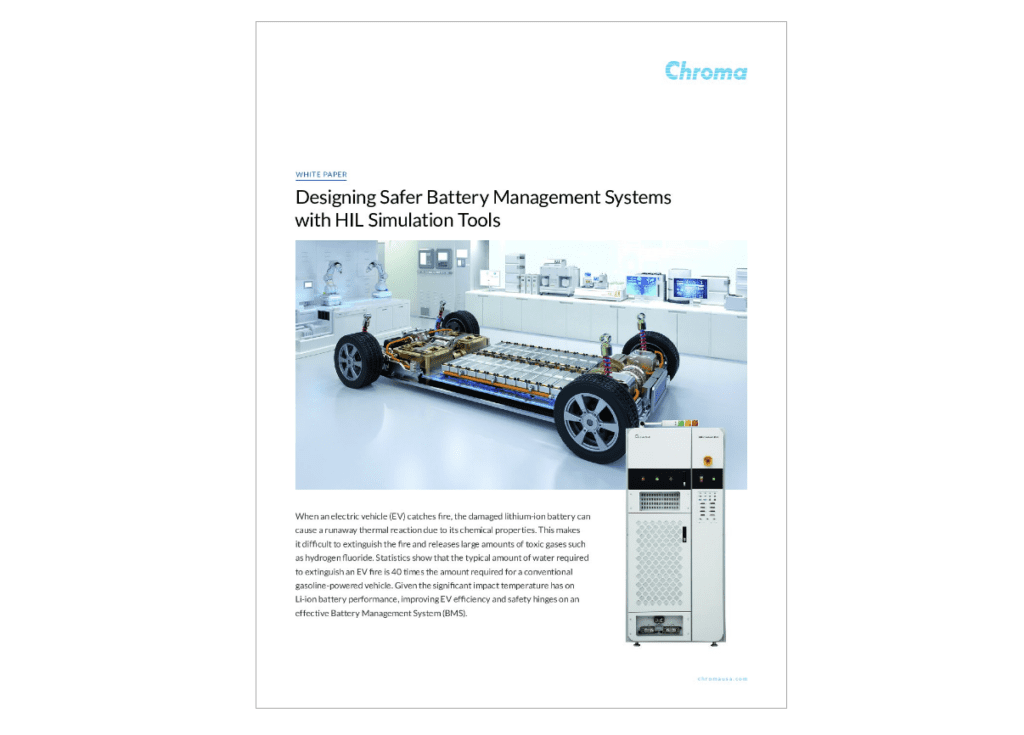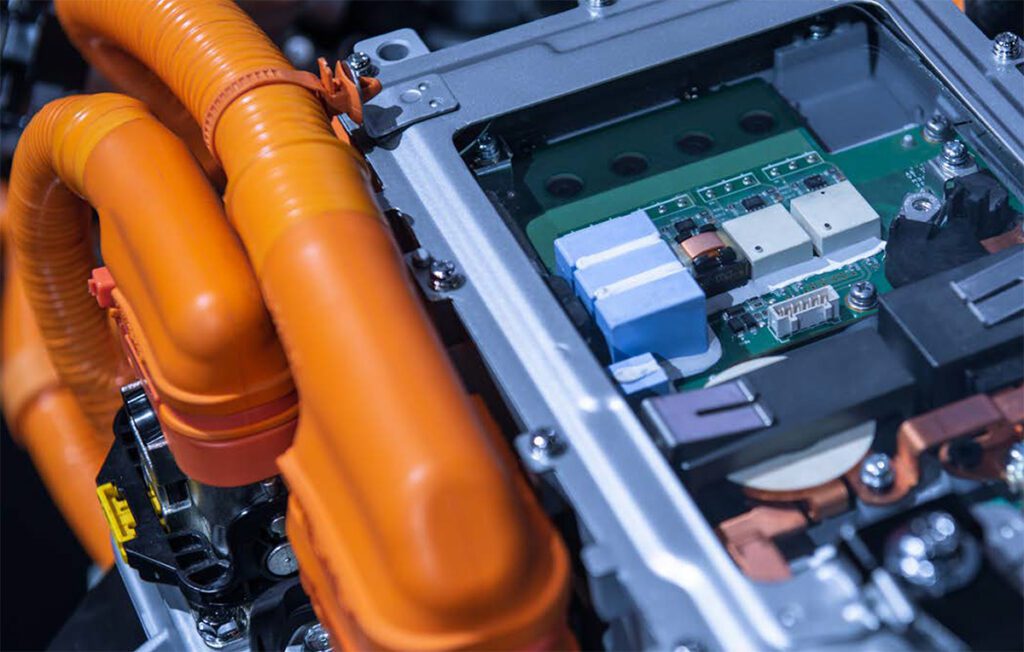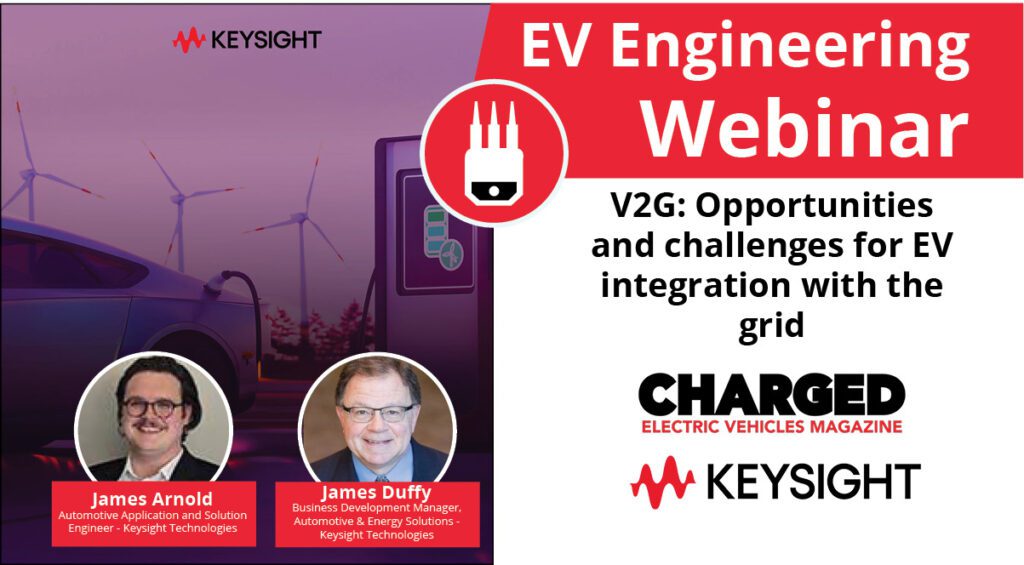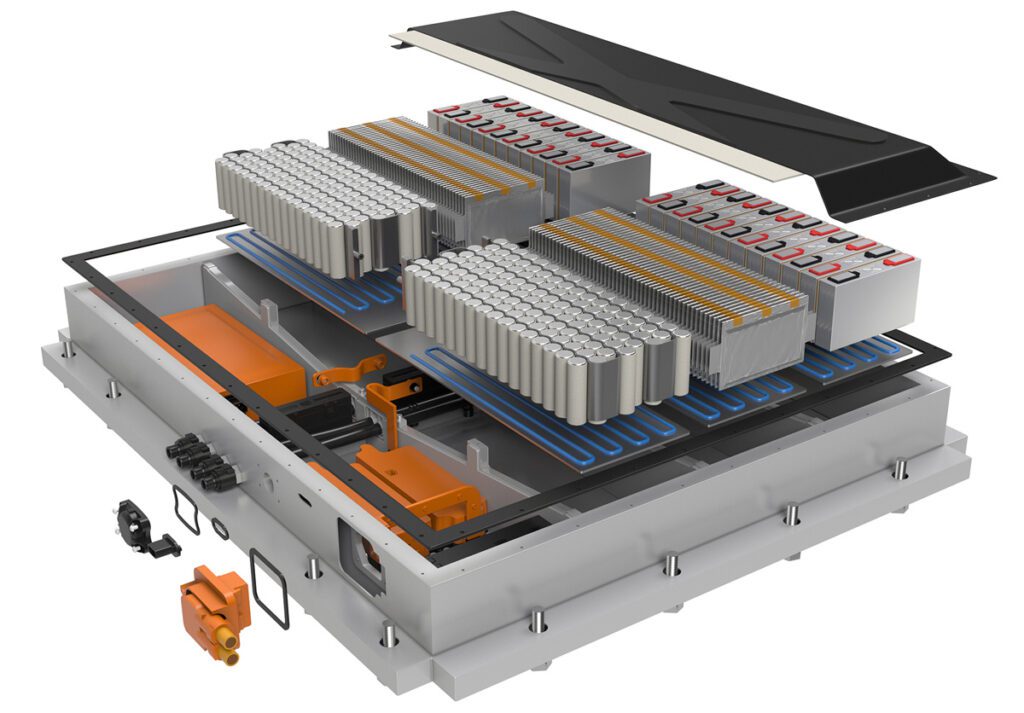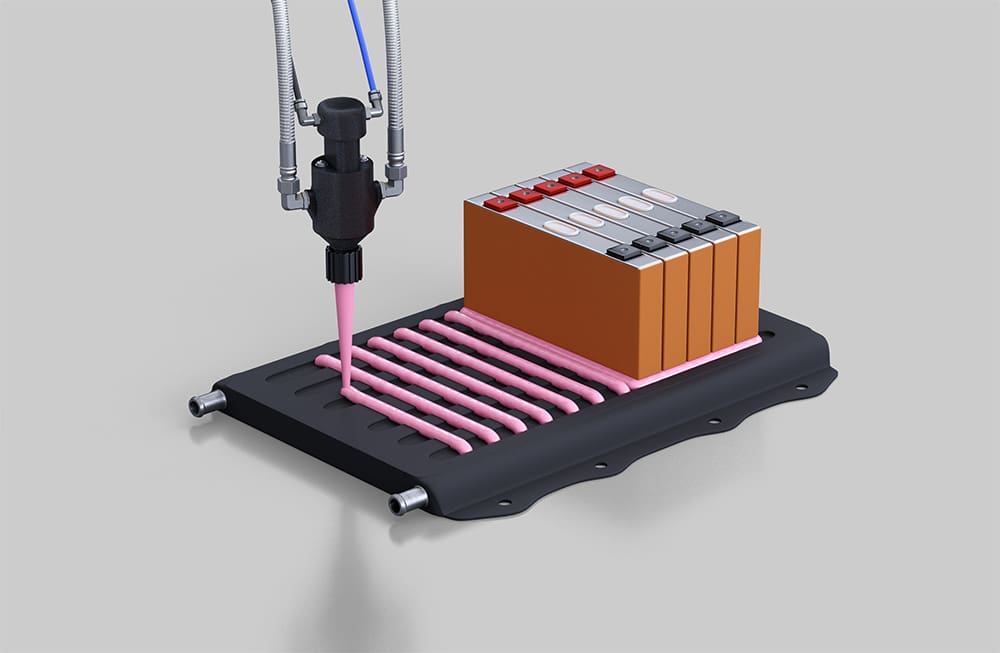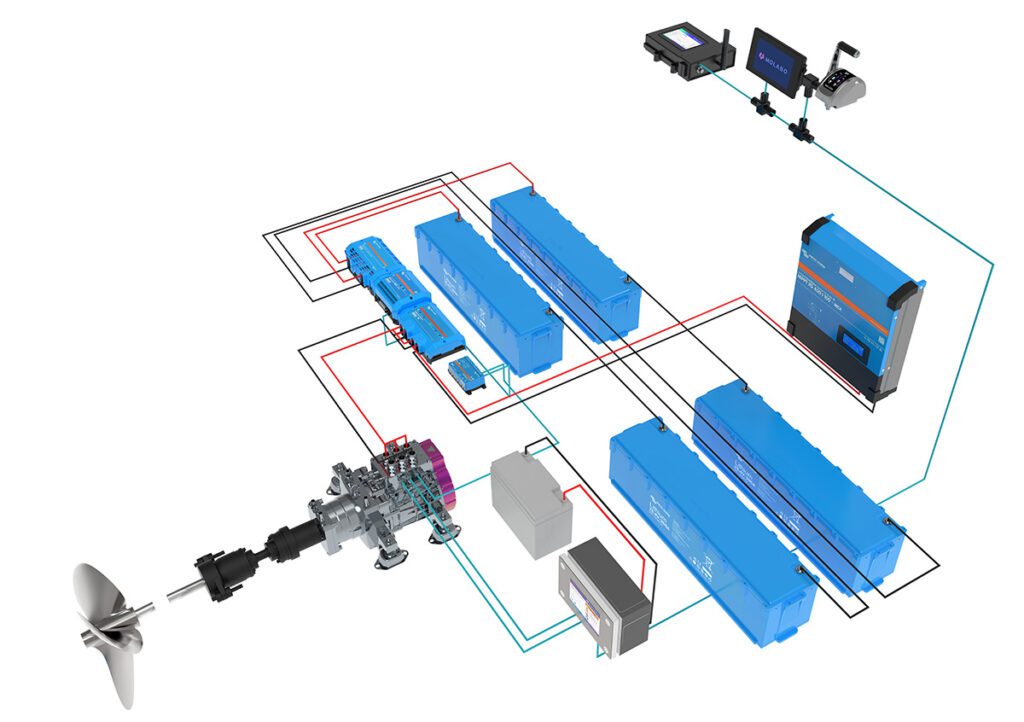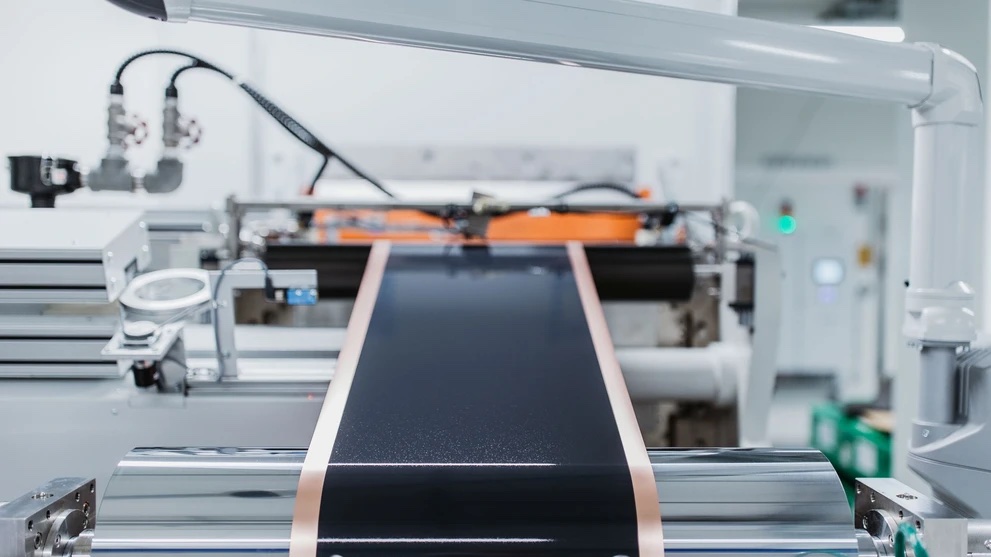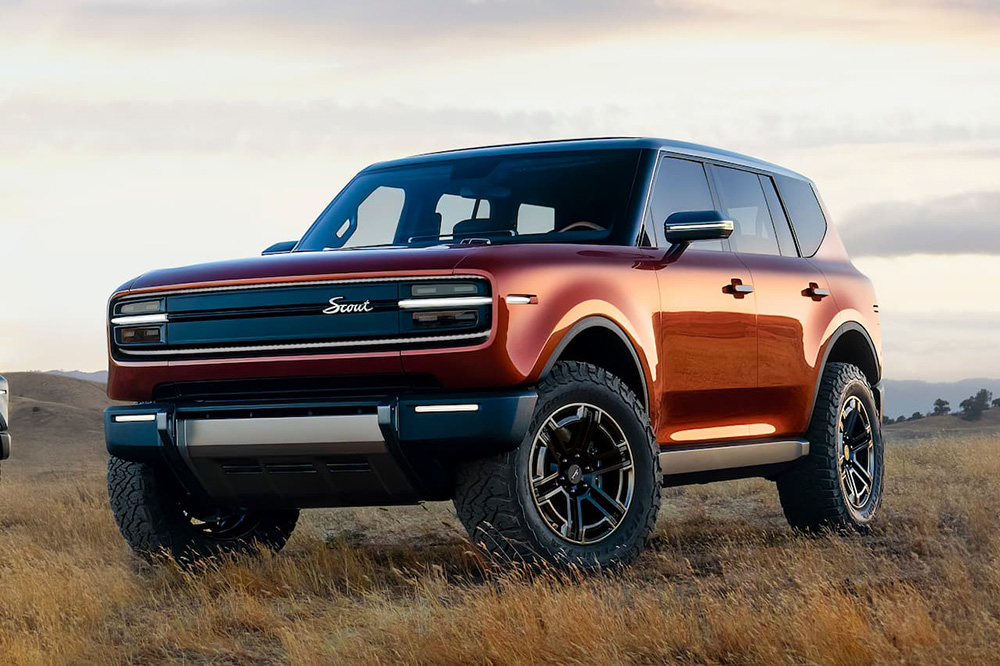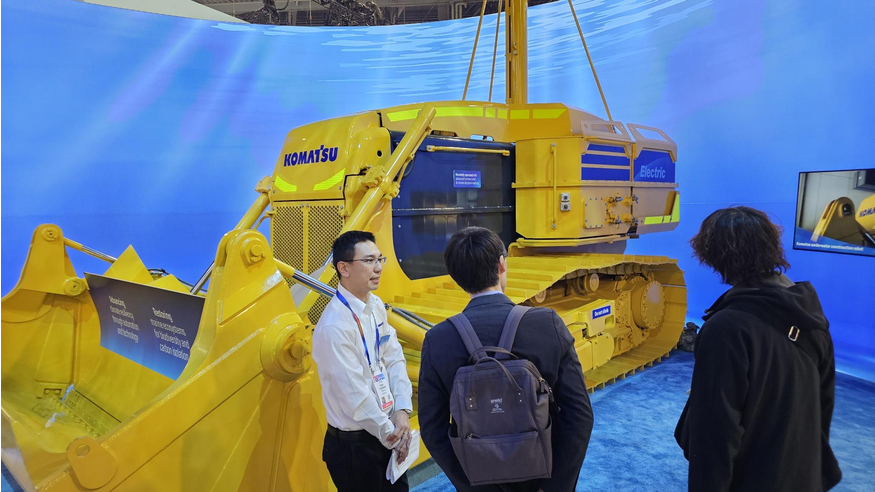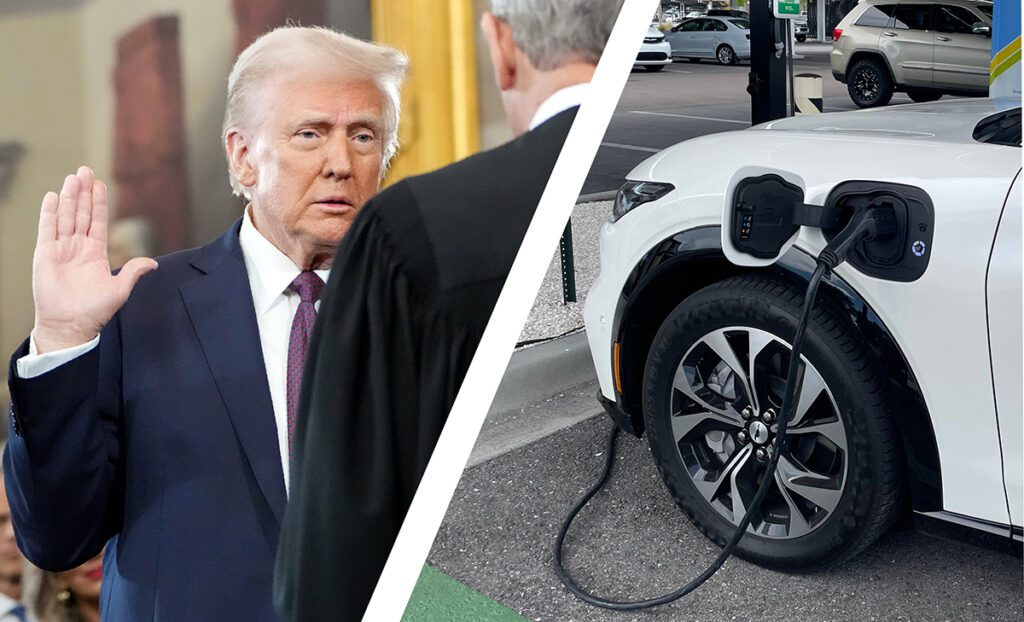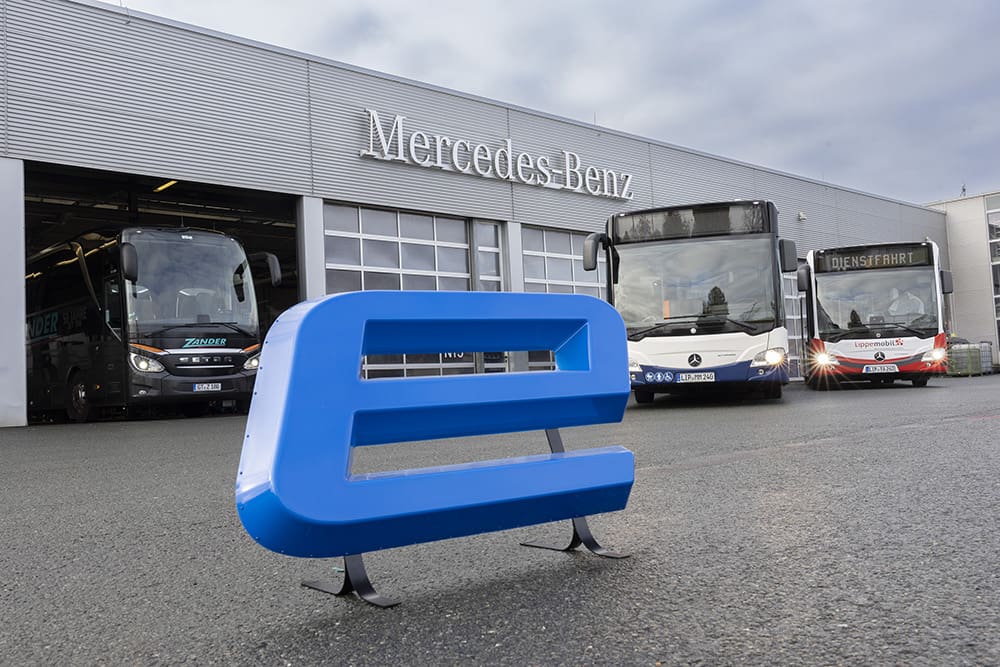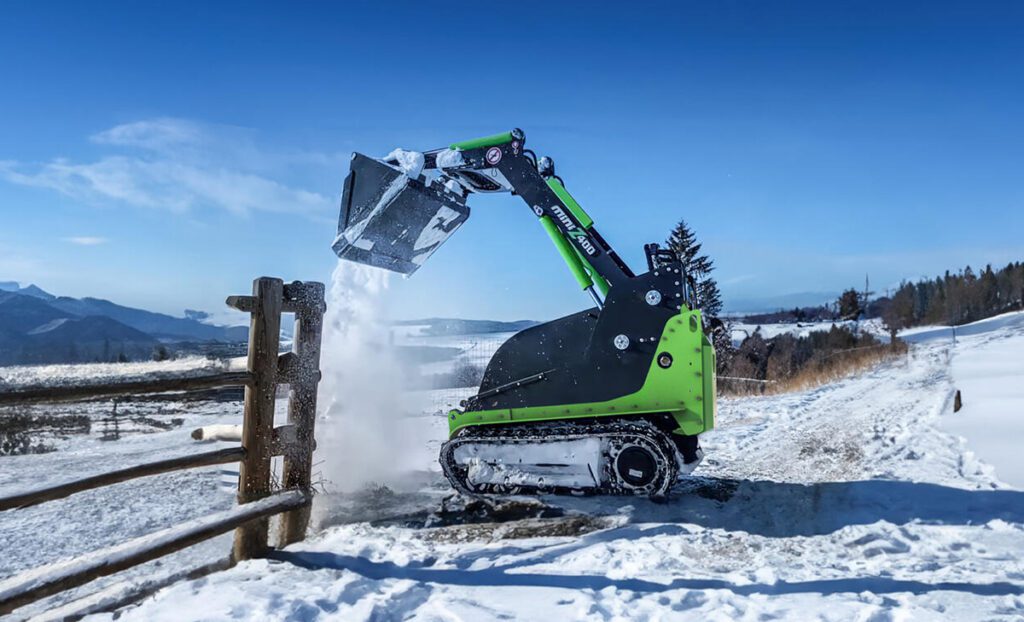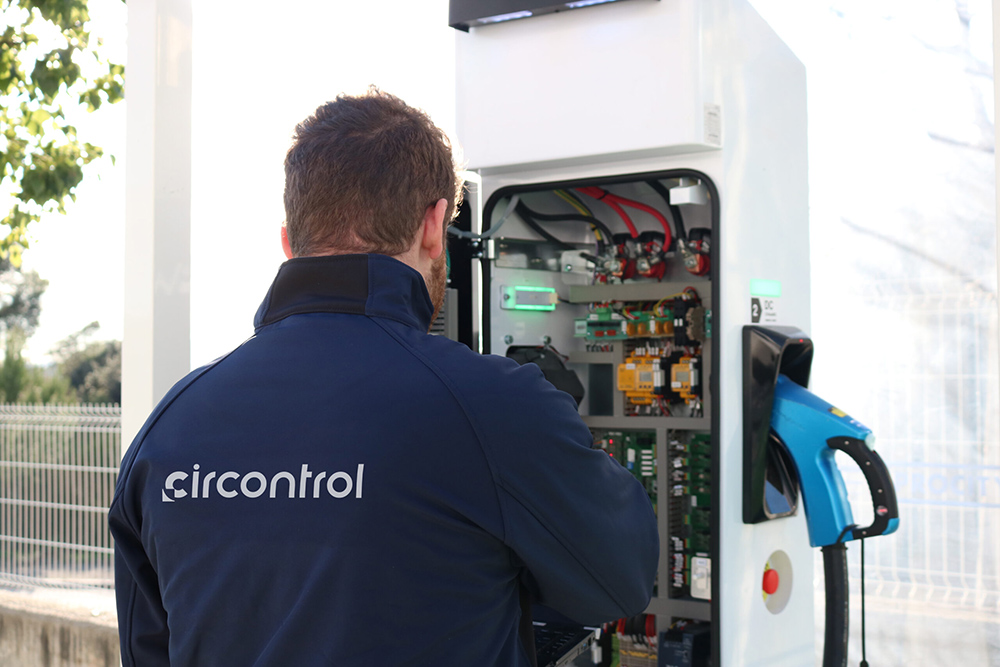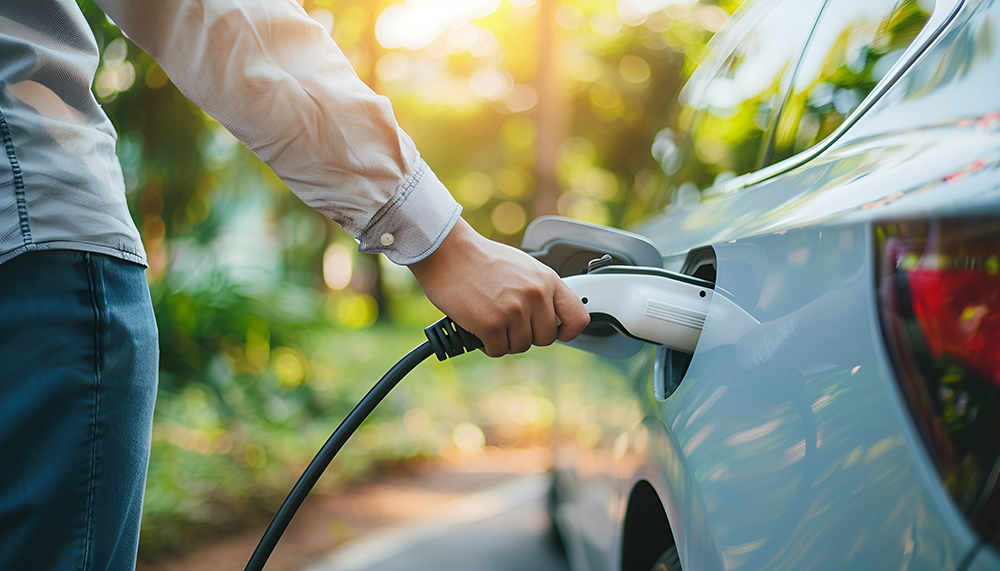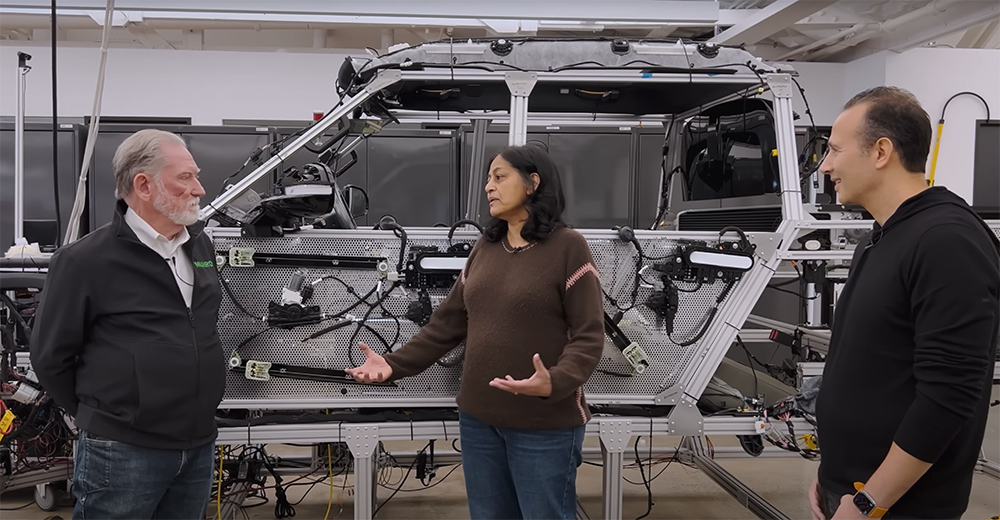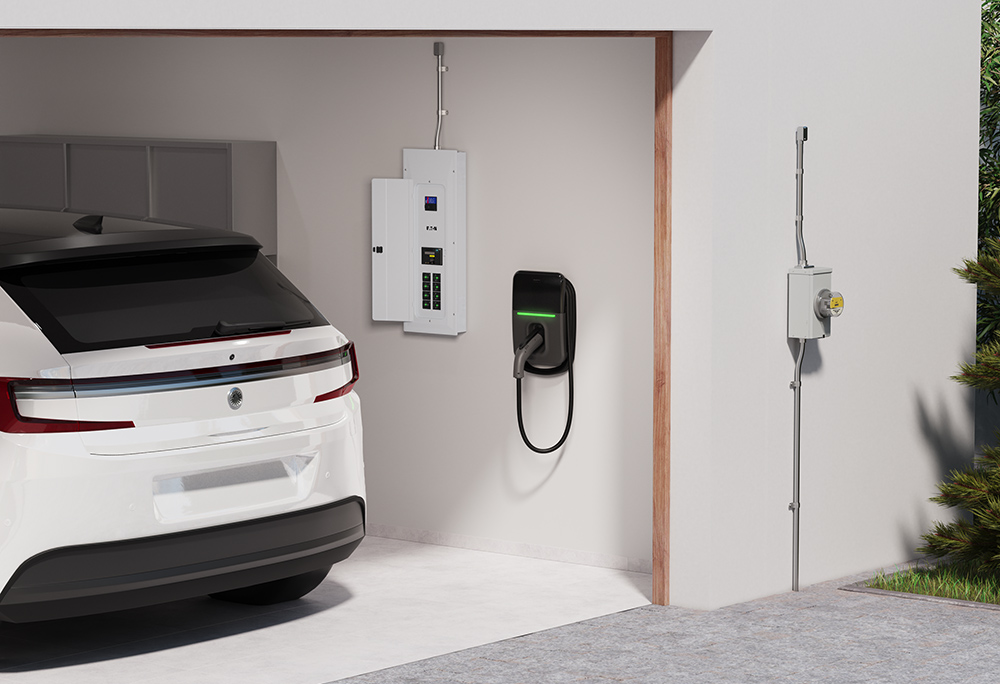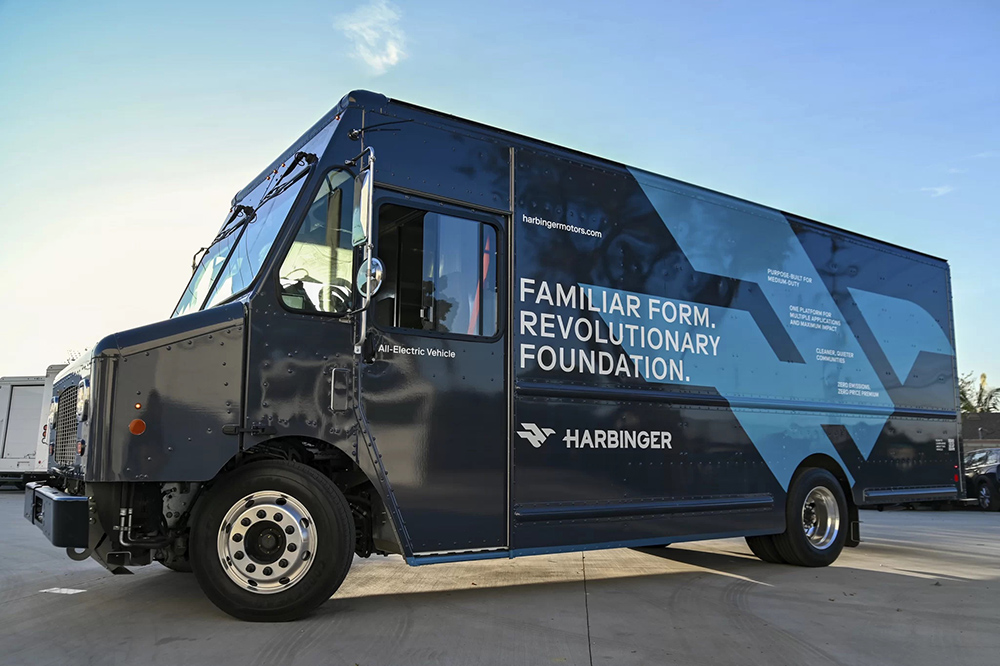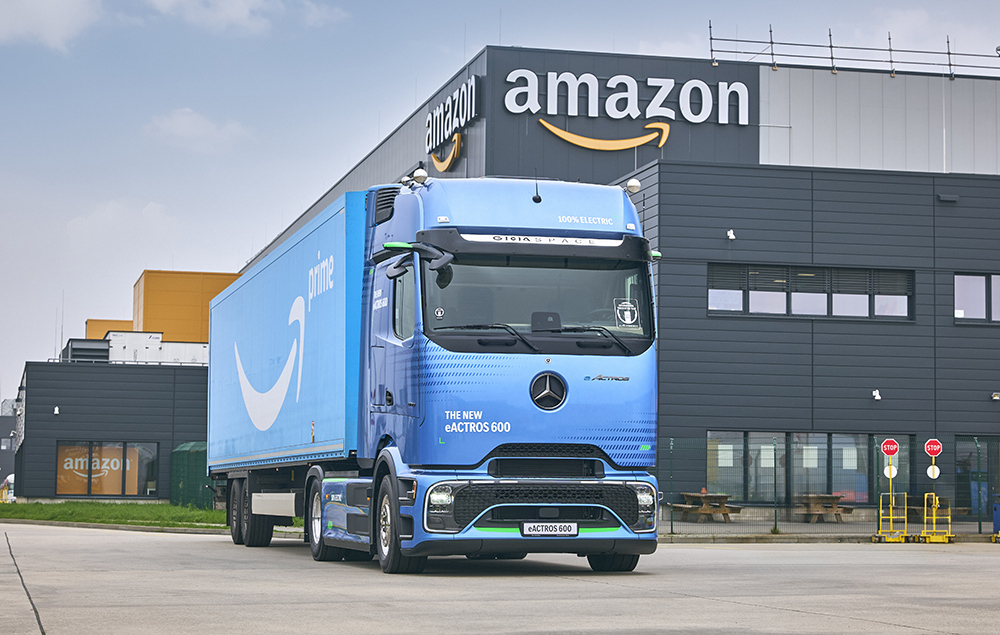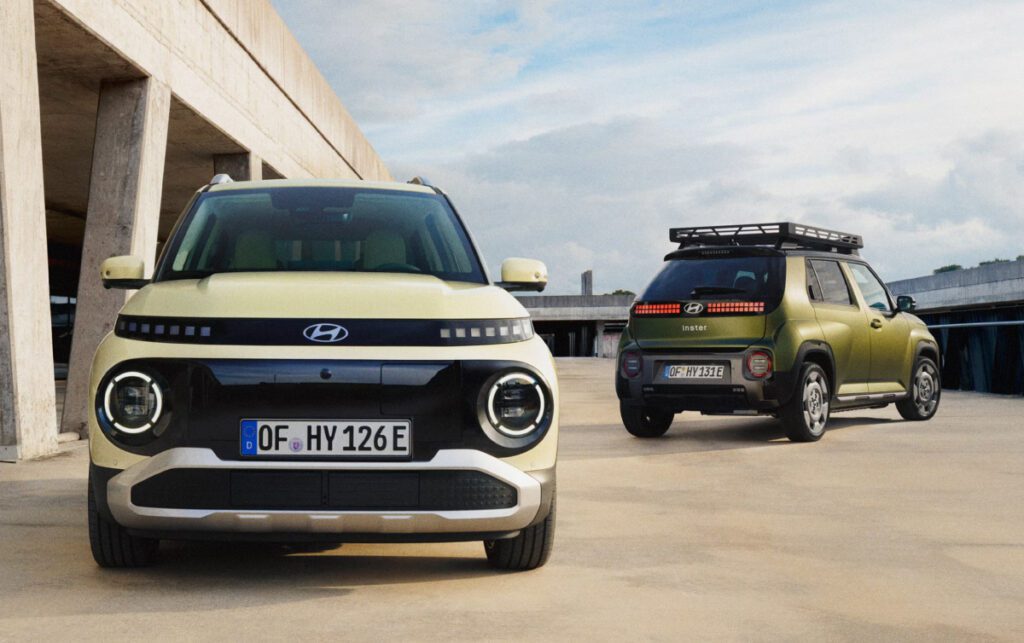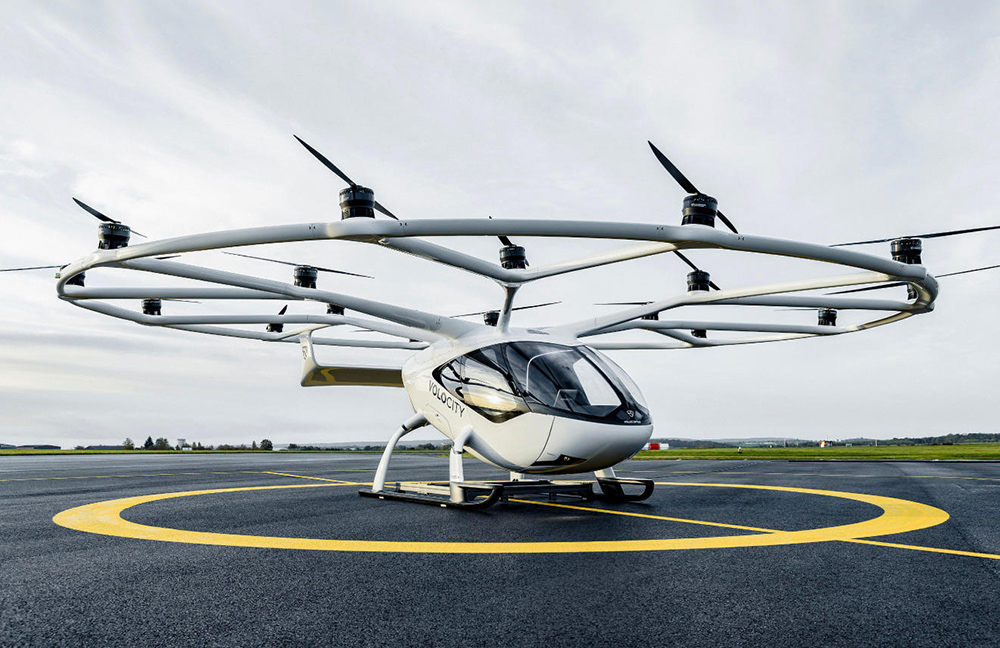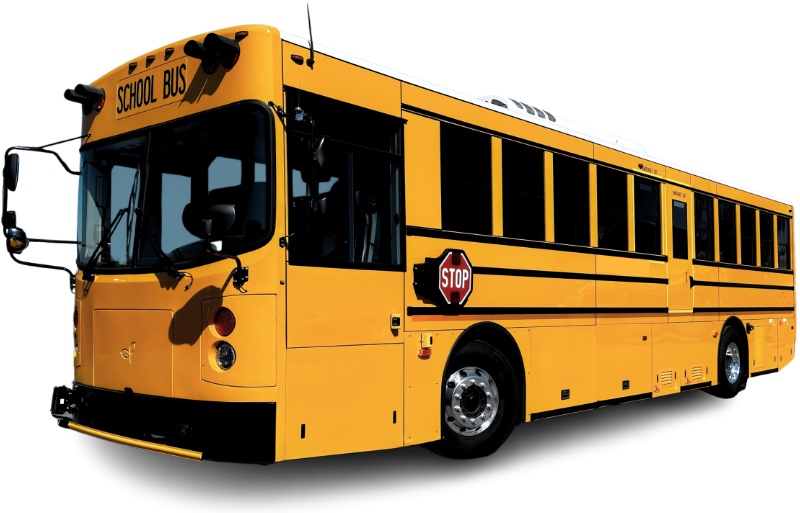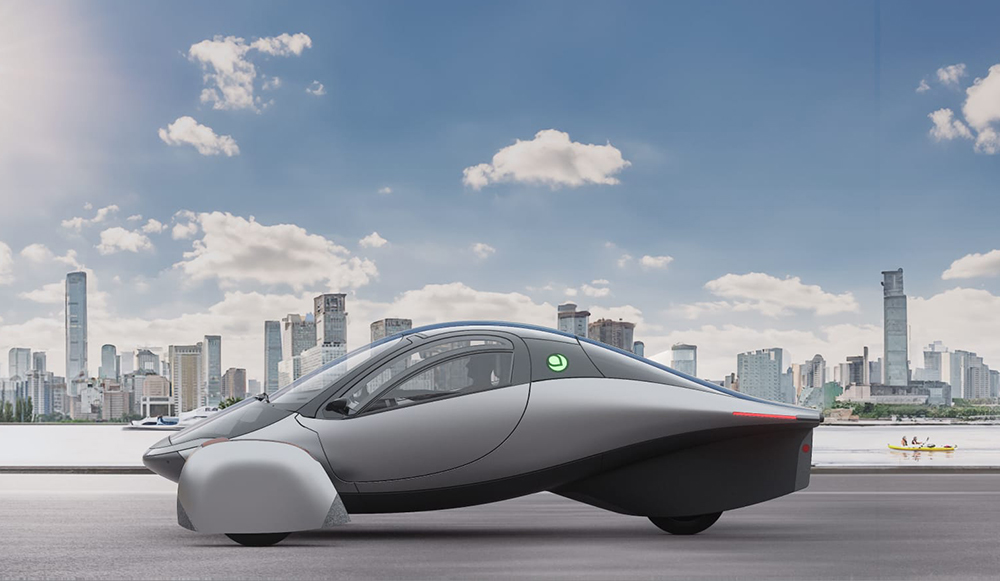Tesla’s mysterious D has been revealed and it is cool. Elon Musk introduced the dual-motor, all-wheel-drive version of Model S at a theatrical event at Hawthorne Municipal Airport (where SpaceX is headquartered). Musk didn’t just show a slide of the goodies – a huge robot arm lifted up a Model S chassis and turned it sideways on, so the audience could get a good look at the new and improved powertrain.
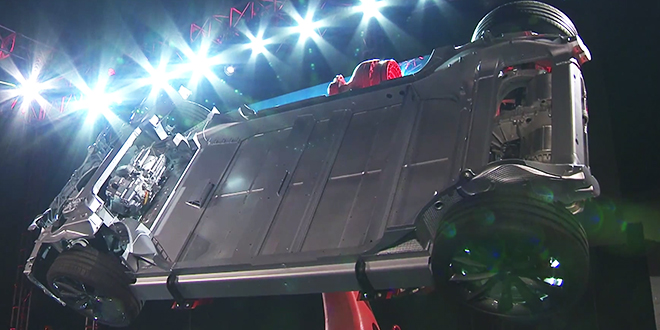
Reports of the new features are all over the media, but as usual, the mainstream press has no idea of the true significance of this. At first glance, it doesn’t seem like that big a deal – Model S has added AWD capability, which is handy in wintry climates, and also a few autonomy/safety features, which other luxury models already have.
To understand why D is not only a huge improvement to Model S, but a revolution that will reverberate through the auto industry, watch the official Tesla video above, and pay close attention to what Musk says:
“The thing that makes this…better than AWD in the past is because you can dynamically shift the power from front to rear at the millisecond level. So you can quickly adjust torque, more than is possible with a mechanically linked system. All AWD systems out there are mechanically linked with a shaft, so it’s like the equivalent of analog, whereas this is a digital system. A system like this is inherently able to achieve better road holding. We were able to improve almost everything about the car.”
While AWD systems on legacy vehicles generally reduce the gas mileage, Tesla’s system improves efficiency. According to Tesla, the Model S 85D version has 295 miles of range at 65 mph, compared to 261 miles for the ordinary S.
The big D also makes a speedy car even speedier. The most powerful P85D version can accelerate from 0 to 60 mph in 3.2 seconds. Total power is 691 hp, apparently the second-highest of any four-door vehicle in the world (exceeded only by the 2015 Dodge Charger SRT Hellcat’s 707 hp). Top speed is 155 mph. “It’s like taking off from a carrier deck…like having your own personal rollercoaster,” said Musk. The Iron Man claims there will be three driving modes: Normal, Sport and Insane.
The D package costs an additional $4,000 for the 60 and 85 kWh versions, and an additional $13,100 for the P85 version (which has a more powerful front motor). Deliveries of the P85D will start in December, with the 60D and 85D to follow in February.
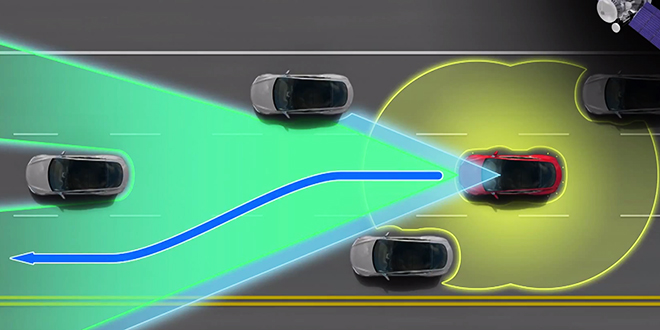
But wait, there’s more! The “something else” that Musk promised is a suite of Autopilot features. These are enabled by four hardware systems, which are now being built into all Teslas (they cannot be retrofitted to older cars): radar, camera, ultrasonic sonar, integrated with GPS navigation and real-time traffic information.
The new Model S features will steer back into its lane if it drifts out, and brake if it detects an impending collision. It will also warn drivers when they exceed the prevailing speed limit, and automatically change lanes when the turn signal is activated. Tesla says “it will take several months for all Autopilot features to be completed and uploaded to the cars,” and additional features are promised for the future.
Now that the hardware is there, fully autonomous driving could theoretically be added via remote software updates, although the company says on its blog that driverless cars are “still years away from becoming a reality.”
However, Tesla teases some driverless functionality as “exciting long term possibilities.” Musk says that Model S could soon park itself, and also come to you when summoned, even using your online calendar to determine where and when you need it. However, he cautioned that some of these features could only be used “on private property” for the moment.
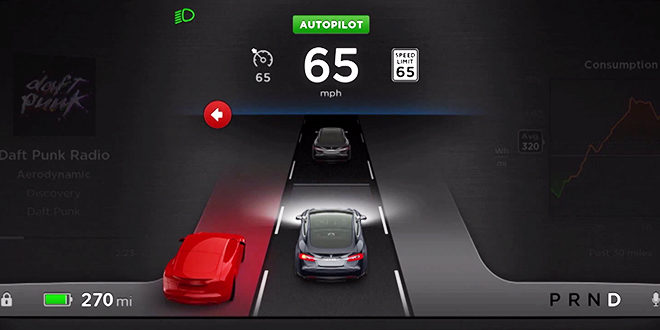
The Tech package with Autopilot costs an additional $4,250.
(Updated 10/11/14 1:00 PM EDT to include information from Tesla’s recent blog post. A previous version of this article implied that self-parking features would be included in the initial release of Autopilot. Tesla’s blog post clarifies this timeline, stating that a self-parking Model S is a long term possibility.)
Sources: Tesla, AP, USA Today, Green Car Reports




